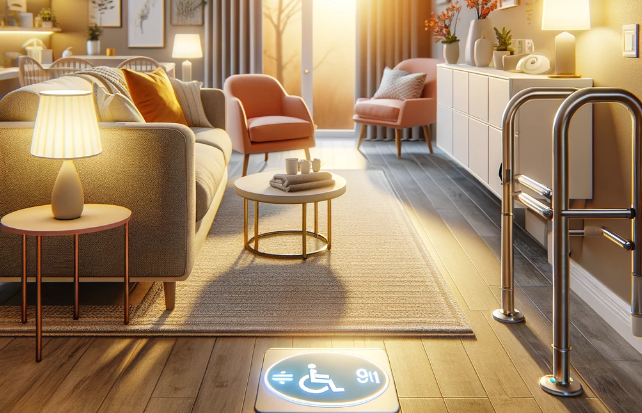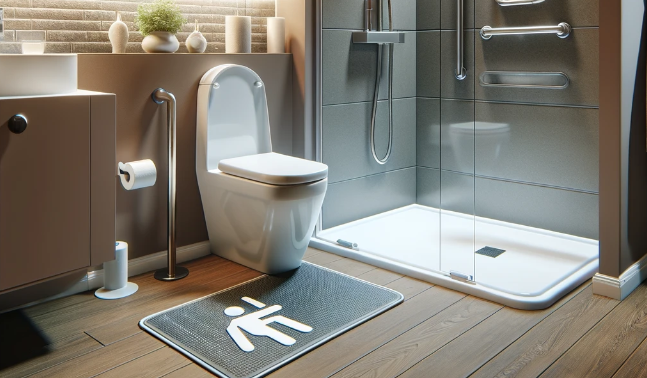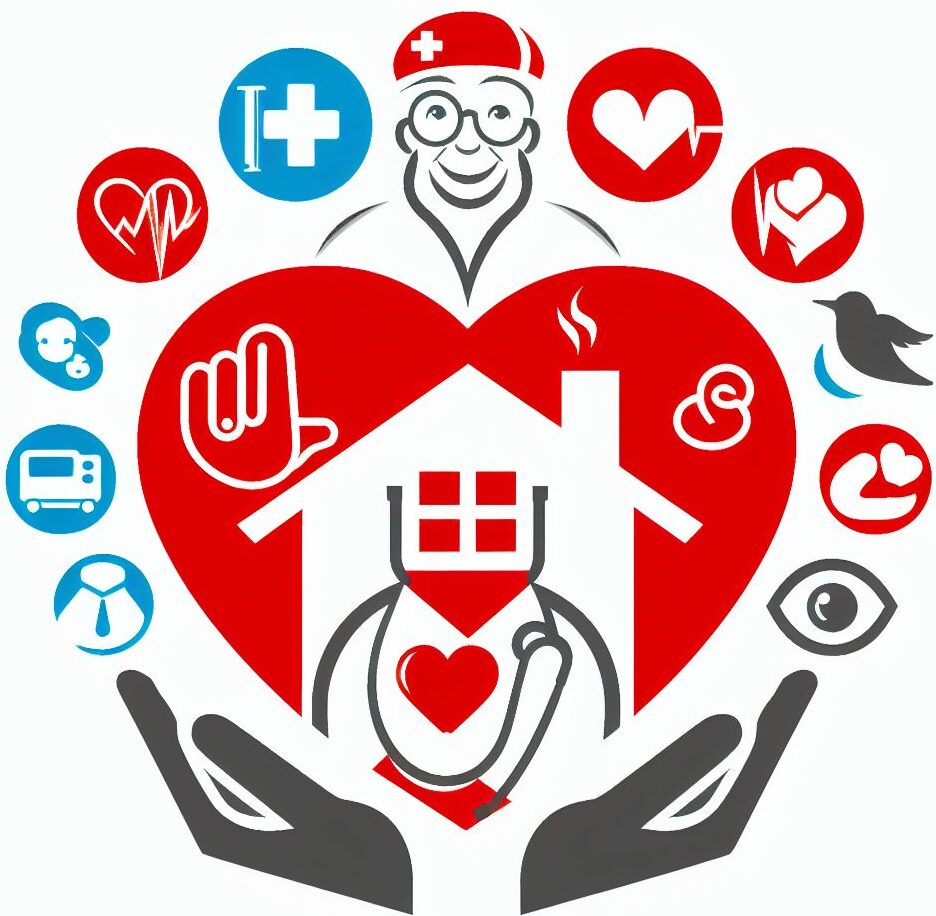The call for elderly-friendly homes has never been louder as the global population continues to age. Moreover, there is a notable extension of life expectancy,
This article aims to shed light on the critical necessity of making homes safer for the elderly. It provides a comprehensive guide on assessing home safety, implementing vital modifications, and maintaining an environment conducive to the well-being and independence of older adults.

Understanding the Need for Elderly-Friendly Homes
Highlighting the Increase in Elderly Population and Longer Life Expectancy: The world is experiencing an unprecedented increase in the number of people living into their 70s, 80s, and beyond, largely due to advancements in healthcare and nutrition.
However, this demographic shift requires a reevaluation of living spaces to accommodate the specific needs of older adults. As such, it emphasizes the importance of home safety and accessibility to support aging in place.
Addressing Common Risks for the Elderly at Home: Elderly individuals face various risks at home, including falls, burns, accidents related to poor ergonomics, and accessibility issues.
For example, falls are the leading cause of injury among older adults, often resulting from hazards like loose rugs, inadequate lighting, and obstructed pathways.
These issues often lead to severe injuries or diminished independence. Therefore, recognizing and mitigating these risks is crucial for creating a safe living environment.
The Importance of Creating a Safe Living Space: A safe living space for the elderly is essential for:
- Promoting independence.
- Reducing the risk of injuries.
- And improving overall quality of life.
Moreover, modifications to the home environment are beneficial in the following ways:
- Helping to prevent accidents.
- Enabling older adults to perform daily tasks more easily.
- And providing peace of mind for both the elderly and their caregivers.
Anecdotes and Testimonials: Personal stories from individuals and families who have made their homes more elderly-friendly can illustrate the significant impact of such modifications.
These stories often highlight the increased confidence and independence of older adults living in a safe, adapted environment.
Assessing the Home for Elderly Safety
The first step in creating a safe home for the elderly is conducting a thorough safety assessment. This process involves a detailed evaluation of the living space to identify potential hazards.
Step-by-Step Guide to Conducting a Home Safety Assessment: This involves systematically reviewing each area of the home to identify potential hazards.
Key steps include checking for adequate lighting, ensuring that pathways are clear and free of obstacles, assessing the safety of stairways and bathrooms, and evaluating the need for assistive devices or modifications.
Identifying Key Areas of the Home That Pose the Greatest Risk: Stairs, bathrooms, and kitchens are often the most hazardous areas for the elderly.
Stairs can be difficult to navigate and pose a high risk of falls. Similarly, bathrooms are slippery and often lack necessary supports. Additionally, kitchens can present risks of burns, cuts, and falls.
How to Recognize Potential Hazards: Potential hazards include poor lighting, which can obscure obstacles and lead to falls. Similarly, loose carpets or floor rugs can slip underfoot. Likewise, clutter can block pathways or create tripping hazards.
Electrical cords, uneven flooring, and inaccessible cabinets or shelves are also common issues.
Seeking Professional Assessments for Tailored Advice: Professionals can offer personalized assessments that consider the unique layout of a home and the specific needs of its elderly residents.
They can recommend targeted modifications and safety enhancements, including:
- Occupational therapists.
- Aging-in-place specialist.
- Or certified home safety experts.

Top Modifications to Enhance Elderly Safety at Home
Once potential hazards are identified, the next step is implementing modifications to enhance safety.
Upgrading Lighting for Better Visibility: Installing brighter, more energy-efficient lighting and ensuring that all areas, especially hallways, stairs, and task areas, are well-lit can significantly reduce the risk of falls and accidents.
Installation of Grab Bars and Railings in Critical Areas: Grab bars in the bathroom near the toilet and shower, as well as railings along stairways and in hallways, provide crucial support for mobility and balance.
Choosing Non-Slip Flooring Options to Prevent Falls: Replacing slippery surfaces with non-slip flooring materials or applying non-slip coatings can greatly reduce the likelihood of falls. For example, removing or securing rugs and mats is also important.
Smart Technology Integration for Monitoring and Assistance: Technologies such as medical alert systems, motion sensors, and smart home devices (like voice-controlled lights and thermostats) can enhance safety and independence.
Ultimately, these provide easy access to assistance and automating home functions.
Balancing Cost-Effectiveness with High-Impact Changes: It’s essential to prioritize modifications based on their potential impact and cost.
Subsequently, these can help families and caregivers implement changes that offer the most significant benefits without exceeding budget constraints.
Maintaining an Elderly-Friendly Home Environment
Regular Home Maintenance Checks to Prevent New Hazards: Scheduling regular inspections and maintenance of the home can identify and rectify new safety risks. It ensures the environment remains conducive to the well-being of elderly residents.
Engaging Elderly Residents in Safety Practices and Training: Furthermore, it’s important to educate older adults on safety practices and involve them in maintaining their living environment. This can empower them and enhance their safety awareness.
Community Resources and Programs for Elderly Home Safety: Many communities offer resources, programs, and financial assistance for elderly home safety modifications. These can include workshops, home assessment services, and grants or loans for home modifications.
Real-Life Success Stories: Finally, sharing success stories of elderly individuals who have benefitted from home safety modifications can inspire others to take action. Additionally, it emphasizes the positive outcomes of creating a safer living environment for aging adults.
Conclusion | Making the Home Safe for the Elderly
Making homes safe for the elderly is a multifaceted challenge that requires careful assessment, targeted modifications, and ongoing maintenance.
Remember, it is important to understand the unique needs of older adults and take proactive steps to address potential hazards. Therefore, families can create living spaces that not only ensure the safety and well-being of their elderly loved ones but also support their independence and quality of life.
The efforts to adapt homes for the elderly not only reflect a commitment to their dignity and safety but also contribute to a society that values and supports its aging population at every stage of life.
I hope you found “Making the Home Safe for the Elderly | A Comprehensive Guide” informative and helpful.
Please feel free to share your thoughts, questions, or comments below. I’d love to hear from you and will be happy to respond.
Veron | Entrepreneur | The Way 4WordEnterprises
